Background
The roots of the ophthalmology Residency Program at the Cleveland Clinic trace back to 1935, at which time the first official ophthalmology resident began training. In 1949, the Residency Program received ACGME certification, typically training two or three residents per year.
In 1976, the Cleveland Clinic ophthalmology residency program was expanded to four residents per year under the transformative leadership of Froncie Gutman, MD (Department Chair, 1969-1991), a renowned retina specialist and former President of the American Academy of Ophthalmology. He appointed Roger H.S. Langston, MD, a fellowship-trained cornea specialist, as the first Residency Program Director, a position which he held for 25 years of his forty year career at the Cleveland Clinic.
In 1994, under the tenure of Dr. Gutman's successor, acclaimed retina specialist Hilel Lewis, MD (Department Chair, 1993-2008), the Cole Eye Institute as an entity was born. Following a multi-year fundraising campaign, in 1999 the ophthalmology department was relocated to the building now known as the Cole Eye Institute, a 130,000 square foot state-of-the-art outpatient facility in which research, clinical care, and education are seamlessly integrated.
In 2001, Elias I. Traboulsi, MD, MEd, a fellowship-trained pediatric ophthalmologist and board-certified geneticist, succeeded Dr. Langston as the Residency Program Director, further elevating the reputation of the program as one of the premier academic institutions in the nation.
In 2008, Daniel F. Martin, MD (Department Chair, 2008-present), an internationally-recognized retina and uveitis specialist and leader of numerous landmark clinical trials, was appointed Chairman of the Cole Eye Institute. Under his leadership, the Cole Eye Institute solidified its standing as a top-ten ophthalmology department in the United States and increased its reach and reputation to unsurpassed heights.
In 2014, Jeffrey M. Goshe, MD, a fellowship-trained cornea specialist and former Chief Resident of the Cole Eye Institute, succeeded Dr. Traboulsi as Residency Program Director. During Dr. Goshe's tenure, a year-long pre-surgical training program was instituted and resident surgical experience was prioritized, reflected by resident surgical volumes soaring into the top 10% of programs nationally.
In 2022, the Cole Eye Institute residency officially became a 48 month integrated training program. Simultaneously, the resident complement increased from four residents per year to five per year, a reflection of the sustained growth of the department and in response to a wealth of currently untapped educational opportunities. Katherine Talcott, MD, vitreoretinal surgeon and former Chief Resident at Massachusetts Eye and Ear Infirmary, assumed the position Associate Program Director to direct the PGY-1 training and assist with the day-to-day administration of the residency program.
In 2025, Sunil Srivastava, MD, was appointed Chairman of the Department of Ophthalmology following a six-month national search that attracted leading internal and external candidates from across the country. A world-renowned retina and uveitis specialist, Dr. Srivastava joined the Cleveland Clinic in 2010 and has since served in numerous leadership roles, including as fellowship director for both the vitreoretinal surgery and uveitis programs. He is a highly accomplished educator, clinician, and researcher, with over 325 peer-reviewed publications and 11 U.S. patents in ocular imaging. His appointment marks the continuation of strong academic and clinical leadership as the department enters a new era following the near completion of a major three-year building expansion that has more than doubled the Institute’s clinical, surgical, and research capacity.
MetroHealth Medical Center
The Cole Eye Institute has partnered with Cuyahoga County MetroHealth Medical Center for more than twenty years to provide ophthalmologic care to residents of the greater Cleveland metropolitan area. Cole Eye Institute residents spend approximately one third of their residency rotating at MetroHealth, spread across the three years of clinical training. The ophthalmology service is structured as a resident-run clinic in which residents are supervised by experienced comprehensive and subspecialty physicians covering the entire spectrum of ophthalmologic care. A number of Cole Eye Institute staff physicians are dually credentialed at MetroHealth Medical Center, providing educational continuity and further reinforcing the symbiotic relationship between the two institutions.
Accreditation
Our residency program is fully accredited by the Accreditation Council for Graduate Medical Education (ACGME) and fulfills all requirements of the American Board of Ophthalmology.
Residents
Current Residents
PGY-4
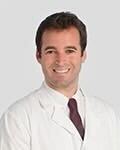
Nicholas Bello, MD
- Medical School: Jefferson Medical College
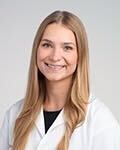
Adrienne Delaney, MD
- Medical School: University of Michigan Medical School
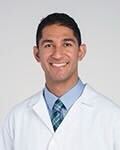
Saam Mojtahed, MD
- Medical School: University of Chicago-Pritzker School of Medicine
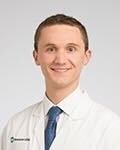
Matthew Regueiro, MD
- Medical School: Emory University School of Medicine

Obinna Ugwuegbu, MD
- Medical School: Case Western Reserve University School of Medicine
PGY-3
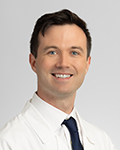
Kevin Allan, MD, PhD
- Medical School: Case Western Reserve University School of Medicine
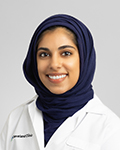
Sarah Atta, MD
- Medical School: University of Pittsburgh School of Medicine
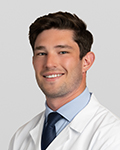
Matthew Henderson, MD
- Medical School: Rutgers, Robert Wood Johnson Medical School
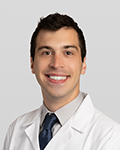
Gabriel Kaufmann, MD
- Medical School: The University of Chicago, Pritzker School of Medicine
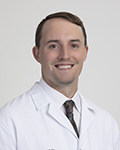
Matthew Russell, MD
- Medical School: Cleveland Clinic Lerner College of Medicine
PGY-2
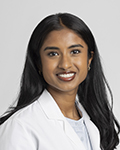
Meghana Chalasani, MD
- Medical School: Northeast Ohio Medical University
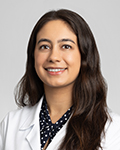
Mehak Kalra, MD
- Medical School: Case Western Reserve University School of Medicine
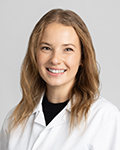
Adina Kazan, MD
- Medical School: Jefferson Medical College
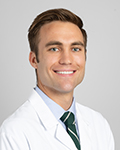
John Moir, MD
- Medical School: The University of Chicago, Pritzker School of Medicine

Baraa Nawash, MD
- Medical School: University of Pittsburgh School of Medicine
PGY-1
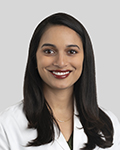
Priya Eppel, MD
- Medical School: Case Western Reserve University School of Medicine
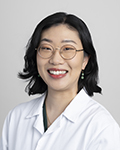
Julia Joo, MD
- Medical School: Case Western Reserve University School of Medicine

Arya Kadakia, MD
- Medical School: University of Illinois College of Medicine
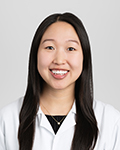
Thuy Le, MD
- Medical School: Ohio State University College of Medicine
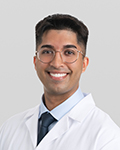
Ronak Shah, MD
- Medical School: SUNY Stonybrook School of Medicine
Recent Graduates
2025 Graduating Residents
- Param Bhatter, MD: Vitreoretinal Surgery Fellowship – West Coast Retina
- Justin Muste, MD: Vitreoretinal Surgery Fellowship – Wills Eye Hospital
- Molly Snider, MD: Cornea/External Disease & Refractive Surgery Fellowship – Cleveland Clinic Cole Eye Institute
- Shirley Wu, MD: Cornea/External Disease & Refractive Surgery Fellowship – Cleveland Clinic Cole Eye Institute
2024 Graduating Residents
- Joseph Abraham, MD: Vitreoretinal Surgery Fellowship – Cleveland Clinic Cole Eye Institute
- Caroline Awh, MD: Vitreoretinal Surgery Fellowship – Harvard Department of Ophthalmology, Massachusetts Eye and Ear Infirmary
- Chad Serels, MD: Lindstrom Cornea Fellowship – Minnesota Eye Consultants
- Kevin Zhang, MD: Glaucoma Fellowship – Wills Eye Hospital
2023 Graduating Residents
- Rachel Downes, MD: Vitreoretinal Surgery Fellowship – Cleveland Clinic Cole Eye Institute
- Kevin Keppel, MD: Comprehensive Ophthalmology and Medical Retina Attendingship – Cleveland Clinic Cole Eye Institute
- Keegan Mechels, MD: Oculofacial Plastic Surgery Fellowship – Oculofacial Plastic and Orbital Surgery (Indianapolis)
- Megan Steinkerchner, MD: Ocular Oncology Fellowship – Harvard Department of Ophthalmology, Massachusetts Eye and Ear Infirmary
2022 Graduating Residents
- Leanne Clevenger, MD: Vitreoretinal Surgery Fellowship – Cleveland Clinic Cole Eye Institute
- Tanner Ferguson, MD: Cornea & External Disease Fellowship – Vance Thompson Vision
- Austen Knapp, MD: Vitreoretinal Surgery Fellowship – Stanford Vitreoretinal
- Kevin Wang, MD: Comprehensive Ophthalmologist – Cleveland Clinic Cole Eye Institute
2021 Graduating Residents
- Rebecca Chen, MD: Glaucoma Fellowship – Bascom Palmer Eye Institute
- Nicholas Grissom, MD: Glaucoma Fellowship – Dever's Eye Institute/Casey Eye Institute
- Sami Khan, MD: Comprehensive Ophthalmology – Grand Rapids, MI
- Michael Krause, MD, PhD: Glaucoma Fellowship – University of Virginia
2020 Graduating Residents
- Jessica Cao, MD: Vitreoretinal Surgery Fellowship – Cleveland Clinic Cole Eye Institute
- Daniel Petkovsek, MD: Glaucoma Fellowship – Wills Eye Institute
- Yue (Carrie) Zhao, MD: Glaucoma Fellowship – University of California San Diego
- Andrew Zheng, MD: Uveitis Fellowship – Cleveland Clinic Cole Eye Institute
Rotations
Beginning on July 1, 2022, the Cole Eye Institute residency program became a 48 month integrated ophthalmology training program. The PGY-1 year was purposefully designed to maximize the relevance to future ophthalmologists and provide the optimal balance of general medical and subspecialty exposure. Nine months of the PGY-1 year are spent in general medical training with the remaining three months devoted to ophthalmology. By the end of the PGY-1 year, residents will have developed the fundamental skills and knowledge base to begin rotating through the immersive subspecialty and comprehensive ophthalmology rotations that comprise the remaining 36 months of training.
The rotation schedule provides balanced exposure to all subspecialty areas of ophthalmology, ensuring a well-rounded and comprehensive training experience. Each resident receives substantial one-on-one teaching from core faculty members. This format fosters an ideal environment for studying complex disease processes and their medical and surgical management, while also allowing residents time to perform thorough examinations and develop independent treatment plans without the pressure of high-volume clinic demands.
Our PGY-1 year is thoughtfully structured to maximize clinical relevance and readiness for ophthalmology training. Inpatient medicine rotations are scheduled in the first half of the year, allowing residents to build foundational clinical skills early on. The remainder of the PGY-1 year is fully dedicated to ophthalmology, one month of emergency medicine, and outpatient subspecialty rotations, providing intensive early exposure to the field and the most seamless transition into the PGY-2 year.
The rotation structure is intentionally designed to recapitulate the major ophthalmic subspecialties—including retina, uveitis, cornea, glaucoma, and oculoplastics—across multiple years of training, allowing residents to revisit each discipline at progressively more advanced levels. This approach ensures early exposure and repeated opportunities for surgical skill development, while reinforcing clinical knowledge through longitudinal experience.
In response to resident feedback and with an emphasis on wellness, two key rotations were added to the PGY-3 year: a dedicated night float and a dedicated inpatient consult service. These rotations were created to reduce interruptions to other subspecialty experiences, ensure more consistent call coverage, and improve work-life balance during a pivotal stage of training.
Approximately one-third of the residency is spent at MetroHealth, the largest county hospital in the Greater Cleveland area and a Level I trauma center. Rotations there include general ophthalmology and all subspecialty services. MetroHealth functions as a traditional resident-run clinic, where residents serve as the primary providers of medical and surgical care under the close supervision of attending physicians. Graduated autonomy is granted based on experience and demonstrated competence.
The proportion of time spent in surgery increases with each year of training. On average, PGY-2 residents spend approximately 10% of their time in the operating room, PGY-3 residents 30%, and PGY-4 residents 50%. Upon graduation, residents are exceptionally well-prepared to enter comprehensive practice or pursue competitive subspecialty fellowships with confidence and skill.
PGY-1
| Inpatient Medicine | 4 Months |
| Intro to Ophthalmology | 3 Months |
| Neurology | 1 Months |
| Emergency Medicine | 1 Months |
| Infectious Disease | 1 Months |
| Ophthalmic Anesthesia/Perioperative Care | 2 Weeks |
| Dermatology | 2 Weeks |
| Neuroradiology | 2 Weeks |
| Rheumatology | 2 Weeks |
PGY-2
| MetroHealth | 21 Weeks |
| Cornea/Refractive Surgery | 10.5 Weeks |
| Glaucoma/Low Vision | 10.5 Weeks |
| Retina/Uveitis | 10.5 Weeks |
PGY-3
| MetroHealth | 10.5 Weeks |
| Pediatric Ophthalmology/Oncology | 10.5 Weeks |
| Neuro-Ophthalmology/Cataract/Hospital Consults | 10.5 Weeks |
| Night Float | 10.5 Weeks |
| Oculoplastics | 10.5 Weeks |
PGY-4
| Anterior Segment/Cataract | 10.5 Weeks |
| Glaucoma | 10.5 Weeks |
| Retina | 10.5 Weeks |
| MetroHealth | 10.5 Weeks |
| Cornea/Cataract | 10.5 Weeks |
Surgical Training
Pre-surgical curriculum
Surgical training at the Cole Eye Institute begins well before residents step into the operating room as primary surgeons. Starting within the first six months of the PGY-1 year, residents begin structured, hands-on training in the Timken Microsurgical Education Laboratory, a dedicated space designed to teach and refine core ophthalmic surgical techniques. This longitudinal wet lab experience continues throughout the entire PGY-2 year, providing residents with over 18 months of formal pre-surgical instruction—one of the most comprehensive and sustained preparatory experiences in the country.
The presurgical curriculum is led by Jeffrey M. Goshe, MD, a fellowship-trained corneal surgeon and residency program director, along with a rotating group of more than 10 Cleveland Clinic faculty representing both comprehensive and subspecialty expertise. On Wednesday mornings from September through June, PGY-2 residents participate in four-hour lab sessions in the state-of-the-art, 600-square-foot facility located on the first floor of the Cole Eye Institute. During these sessions, residents learn advanced microsurgical techniques using the latest OR-grade surgical instruments, operating microscopes, and phacoemulsification and vitrectomy systems.
Residents participate in a broad array of specialty wet lab modules, including:
- Advanced phacodynamics, including Phaco Chop
- Amniotic membrane transplantation
- Corneal and conjunctival suturing
- Extracapsular cataract extraction
- Eyelid laceration repair and rotational skin flaps
- Glaucoma filtering surgery
- Minimally invasive glaucoma surgery (MIGS)
- Iridoplasty and advanced suturing techniques
- Penetrating and lamellar keratoplasty
- Sutured intraocular lenses
- Strabismus surgery
- Vitrectomy (anterior and pars plana approaches)
In addition to the formal wet lab curriculum, residents have access to a brand-new EyeSi surgical simulator, replaced in 2025, which features the most up-to-date training modules available. The simulator provides residents with an immersive, feedback-driven environment to practice key surgical maneuvers, phacoemulsification techniques, and complication management—further enhancing preparedness for live surgical experiences.
Each resident receives more than 100 hours of individualized instruction in this controlled training environment, building both technical precision and procedural confidence. Importantly, actual surgical experience in the operating room begins in the second half of the PGY-1 year and continues throughout the remainder of residency. By the time residents enter their PGY-3 year, they are fully prepared to perform all facets of intraocular and extraocular surgery with increasing independence.
Surgical experience
Early in the PGY-2 year, residents begin performing the basic steps of cataract surgery, applying microsurgical skills developed during the comprehensive wet laboratory program. By the second year of residency, residents are fully prepared to perform complete primary cataract surgeries. PGY-3 residents typically complete 30–50 primary cataract procedures, while also gaining surgical experience in strabismus and oculoplastics.
During the PGY-4 year, residents perform an additional 250–350 cataract surgeries, culminating in a total of 300–400 primary phacoemulsification procedures by graduation—placing them in the 95th percentile nationally. Residents gain proficiency with premium intraocular lenses and femtosecond laser-assisted cataract surgery, along with exposure to advanced techniques and intraoperative decision-making.
In addition to cataract surgery, PGY-4 residents serve as primary surgeons on a broad array of anterior and posterior segment cases, including:
- Glaucoma filtering surgery, including trabeculectomy and tube shunt procedures
- Minimally invasive glaucoma surgery (MIGS)
- Pars plana vitrectomy and other vitreoretinal procedures
- Corneal transplantation, including both penetrating and lamellar techniques
Surgical management of globe trauma is distributed across all years of training. Residents also have the opportunity to perform primary keratorefractive surgery, including LASIK and PRK, throughout residency under the guidance of dedicated faculty.
The total surgical volume for graduating residents is typically in the 80th percentile nationally, reflecting both the breadth and depth of surgical training offered at the Cole Eye Institute. Owing to this high-volume, hands-on experience, residents graduate feeling confident in their ability to pursue any ophthalmic subspecialty or to transition directly into a busy comprehensive ophthalmology practice.
Education
Didactics/Conferences:
PGY-1 non-ophthalmology rotations
While rotating throughout the various medical specialties that comprise the PGY-1 year of training, residents attend specialty-specific educational conferences to create an immersive experience for each rotation. For select rotations, PGY-1 residents have the opportunity to attend Ophthalmology Grand Rounds and additional ophthalmology conferences as their schedules permit.
PGY-2 orientation
Lectures: Between July and September, PGY-2 residents have protected time on Wednesday mornings for additional didactics to help them prepare for clinical rotations. Lectures are given by departmental faculty, research staff and clinical fellows, and are focused on both practical and academic topics.
Morning lecture
Series: The backbone of the didactic program is the 18-month Core Lecture Series, a robust curriculum of more than 120 lectures covering key topics from all subspecialties. A variety of teaching styles are employed, including standard didactic lectures, case-based presentations and roundtable discussions. Approximately 90% of lectures are given by Cole Eye Institute departmental staff, with the remainder given by optometrists and clinical fellows. The curriculum is designed such that the entire program is completed twice during the 48-month training program. This redundancy is intentional, knowing that senior residents are often excused from morning lectures to begin their operating room duties. Lectures are held 7-8 a.m. in the J.P. Storer Conference Room, on the first floor of the Cole Eye Institute.
Grand Rounds
From September through June, Ophthalmology Grand Rounds are held on Monday mornings, 7-8 a.m. Residents, fellows and departmental staff take turns presenting interesting clinical cases or research topics followed by an interactive discussion. Each presentation includes a review of pertinent peer-reviewed literature and summary take-home points.
Morbidity and mortality (m&m) conferences
Senior residents (PGY-3 and PGY-4) and faculty members take turns presenting surgical or clinical cases involving complications or negative outcomes. Presenters provide a summary of any evidence-based medicine relevant to the critical decision-making, and an open discussion is held. The purpose of this conference is to learn from past experiences in a constructive environment, with the goal of enhancing the efficiency and quality of patient care.
Distinguished lecture series
The Distinguished Lecture Series is a forum in which renowned visual scientists are invited to the Cole Eye Institute to present a lecture on their latest research findings. These lectures are held once a month, noon-1 p.m. Residents are encouraged to attend, and interactive discussion is expected.
Chief lectures
Every month the chief resident gives a lecture to the PGY-2 residents focused on high-yield information for board preparation. These lectures are designed to be interactive, informal sessions with a heavy emphasis on pattern recognition and classic disease presentations.
Pathology laboratory
PGY-2 residents receive more than 40 hours of structured, interactive pathology training in a small group setting with Careen Lowder, MD, PhD, a uveitis specialist with fellowship training in ocular pathology and thirty years of experience teaching residents. The sessions are held in the Timken Microsurgical Education Laboratory following wet labs on select Wednesdays throughout the academic year.
Pathology conferences
Residents attend quarterly conferences in which interesting clinical cases with ophthalmic pathology are presented. The conferences are moderated by ocular oncologist Arun Singh, MD, and pathologist Gabrielle Yeaney, MD.
Resident case conferences
Residents present interesting or challenging cases encountered while on call. These sessions are moderated by a clinical fellow and serve as an informal forum to help residents improve skills for on-call issues and transition to unsupervised practice.
Fluorescein angiography (fa) and uveitis conferences
Residents and subspecialty fellows participate in monthly conferences about interesting uveitis and FA cases. The cases are moderated by the subspecialty fellows but attended by departmental staff to encourage high-level discussion and evidence-based medicine.
Glaucoma conferences
Residents and glaucoma fellows join in on lively monthly conferences that bring complex glaucoma cases to life. These aren’t your typical lectures—sessions are interactive, fast-paced, and filled with hands-on learning. Faculty guide participants through real-world cases, tying together clinical exam findings, visual fields, OCT, and gonioscopy. One of the most popular features is the chance to watch and discuss surgical videos from fascinating and challenging cases, often sparking spirited debates and new insights. Even better, residents get the unique opportunity to turn these cases into presentations for national conferences and publications in peer-reviewed journals—an incredible boost for career development. With plenty of practical pearls and stories shared by expert faculty, these conferences are as fun as they are educational, making them a true highlight of the training experience.
Medical retina imaging conferences
Residents and subspecialty fellows participate in monthly conferences moderated by medical retina specialist Amy Babiuch, MD. Interesting or challenging cases are presented, and interactive group discussion ensues. Interpretation and application of diagnostic retinal imaging are emphasized.
Journal clubs
Ophthalmology journal clubs are held on average once monthly throughout the year. These meetings are held at a variety of venues, including homes of departmental staff and upscale restaurants. Journal clubs offer an informal but educational environment dedicated toward increasing resident apprehension of recent literature and ability to critically analyze scientific papers.
Ethics conferences
On a quarterly basis, resident ethics conferences are held with moderators Elias Traboulsi, MD, a pediatric ophthalmologist and geneticist, and Paul Ford, PhD, a medical bioethicist and the Director of the NeuroEthics Program at Cleveland Clinic. These conferences are held over dinner, employing an informal roundtable format. Residents anonymously submit ethical cases in advance and are presented for discussion at the meeting. Relevant peer-reviewed literature, when available, is provided as a basis for further discussion and enrichment.
Cornea and refractive surgery conferences
Clinical faculty and subspecialty fellows present interesting cases with an emphasis on diagnostic testing and clinical photos. Residents participate by interpreting studies, generating a differential diagnosis and proposing a management plan. Informal discussion with faculty and fellows takes place to provide practical and evidence-based take-home points.
Cleveland Ophthalmological Society
Cole Eye Institute residents are freed from clinical responsibilities to attend the Cleveland Ophthalmological Society (COS) meetings, held every two months Tuesday afternoons from September through April. The meetings consist of two hours of didactics followed by a key note lecture from the invited guest lecturers. Residents are invited to present interesting cases. Approximately 100 regional ophthalmologists are in attendance and each meeting has a specific theme (e.g. Management of Surgical Complications, Update on Ocular Oncology, etc.). Guest lecturers are frequently nationally or internationally acclaimed experts in their field.
Continuing medical education conferences
Throughout the year, the Cole Eye Institute holds educational conferences for CME credit which are offered to regional ophthalmologists on a variety of subspecialty topics (e.g. annual North Coast Retina Symposium). These conferences are typically held on Saturdays, two to three times per year. Residents are expected to attend these conferences and frequently are invited to present cases or short lectures.
Annual Resident Research Day
Every year, residents and faculty attend the Annual Resident Research Day, an all-day conference in which residents, fellows and select faculty give focused presentations on a research project they have completed in the previous year. The conference includes a prominent invited guest speaker who gives the keynote lecture and attends a dinner reception with the residents.
OKAP review
Between January and March, approximately fifteen review sessions are provided for residents and fellows to review high-yield content in preparation for the annual Ophthalmic Knowledge Assessment Program (OKAP), a yearly examination given to prepare residents for the Ophthalmic Board Examination.
Cadaver lab
Residents are invited to participate in cadaver dissection at the Cleveland Clinic Lerner College of Medicine to demonstrate orbital anatomy to medical students.
Call Structure
Call responsibilities are thoughtfully distributed over the course of the 48-month residency to support educational growth, patient safety, and resident wellness. All call is taken from home, though dedicated sleep rooms are available at both Cleveland Clinic Main Campus and MetroHealth, if needed. In the event of an exceptionally busy night, the on-call resident may be excused from clinical responsibilities the following morning to ensure adequate rest.
Call is always supervised by a combination of departmental faculty and clinical fellows, ensuring that residents have appropriate backup at all times while progressively gaining independence and clinical autonomy throughout their training.
PGY-1 call – MetroHealth buddy call
The first half of the PGY-1 year is dedicated to inpatient rotations such as medicine, neurology, and infectious disease, during which residents follow the call schedules of the internal medicine program. These rotations may include “long call” days and short stretches of night float (not exceeding two weeks).
In the second half of the PGY-1 year, residents transition to ophthalmology-focused outpatient rotations and skill development. In the later months of the PGY-1 year, residents begin taking buddy call with senior residents at MetroHealth Hospital, promoting early exposure to on-call responsibilities, fostering graduated autonomy, and ensuring a smoother transition into primary call roles during the PGY-2 year.
PGY-2 call – MetroHealth primary call + Cleveland Clinic buddy call
PGY-2 residents take primary home call every five days at MetroHealth, a Level I trauma center. The majority of after-hours consults involve the management of ocular and orbital trauma. Minor procedures such as eyelid laceration repair may be performed independently or under supervision based on experience and comfort. PGY-4 residents provide backup for surgical cases and complex decision-making, and MetroHealth attendings are always on call for operative cases.
Later in the PGY-2 year, residents begin buddy call at Cleveland Clinic Main Campus alongside PGY-3 residents, allowing for gradual exposure to higher-acuity consults in preparation for assuming primary call duties at Main Campus in PGY-3.
PGY-3 call – Cleveland Clinic night float and weekend call
PGY-3 residents take primary home call at Cleveland Clinic Main Campus, a Level II trauma center. Emergencies from across the Cleveland Clinic system are triaged to Main Campus, ensuring residents gain experience with a wide range of acute pathology.
Primary call during the PGY-3 year follows a night float model, in which residents take home call from Sunday evening through Friday morning on average every fifth week. Weekend call coverage (Friday through Sunday) is provided by PGY-3 residents on the other clinical rotations, ensuring equitable distribution of call duties.
PGY-3 residents respond to emergent cases and often perform surgical procedures under direct supervision by attending physicians or fellows. Minor bedside procedures—including laceration repair, lasers, and intravitreal injections—may be performed independently based on training level.
PGY-4 call – MetroHealth backup call (ends in April)
PGY-4 residents provide backup home call for MetroHealth, typically in one-week blocks. This call is light and usually requires hospital presence only for operative cases or complex consults. In the early months of the academic year, PGY-4 residents also serve as mentors during PGY-2 buddy call, helping junior residents gain comfort and independence in handling call responsibilities.
Call responsibilities for PGY-4 residents conclude at the end of April, allowing the final two months of residency to be call-free. This schedule supports a smoother logistical transition to fellowship and enables graduating residents to fully participate in all year-end activities, including the graduation ceremony and farewell events.
Research
Cole Eye Institute residents are encouraged to participate in research throughout the course of their residency. Extensive guidance and mentorship are provided both individually and in group settings by our experienced faculty, many of whom are leaders in academic ophthalmology. Residents have the opportunity to develop novel projects or to collaborate with faculty on existing research studies. Cole Eye Institute faculty and residents are among the most productive at Cleveland Clinic and in the United States.
Residents have ample time to conduct research, including basic science and clinical projects. For rotations at Cleveland Clinic Main Campus, any faculty away time (for conference attendance or vacations) defaults to research time for the assigned residents. This typically adds up to 10-15 days per year of nonclinical time in which residents are free to work on projects or complete other administrative tasks.
Although there is no formal requirement to publish, residents typically complete three to five first-author publications during the course of their residency. Many of these papers are accepted to high-impact journals and begin as presentations at national meetings. For those interested in pursuing subspecialty training, the productivity of our residents plays a strong role in their ability to secure top academic fellowships.
Every year, the Cole Eye Institute holds its Annual Resident Research Day, a full-day symposium featuring presentations from residents, fellows and faculty.
Residents frequently present at a variety of national meetings, including: the Association for Research in Vision and Ophthalmology (ARVO), American Academy of Ophthalmology (AAO), American Society of Cataract and Refractive Surgery (ASCRS), American Association for Pediatric Ophthalmology and Strabismus (AAPOS), Retina Society, and American Society of Ophthalmic Plastic and Reconstructive Surgery (ASOPRS).
A sampling of some of the many ongoing research projects is available on ConsultQD.
Apply/Benefits
Application process
Please submit all application materials through the San Francisco (SF) Match service.
For the most up-to-date application deadline, interview dates, and additional information, please refer to our program profile on SF Match.
Interview selection criteria
The Committee reviews every application received by our deadline individually, and while we have no absolute requirements, we do give strong preference for applicants who meet the following criteria:
- Outstanding college and medical school academic records.
- Strong work ethic and interpersonal communication skills, as evidenced by letters of recommendation, Dean's letter and medical school rotation evaluations.
- A commitment to advancing medical knowledge through laboratory research, clinical research or medical education.
- A passion for ophthalmology as indicated by involvement in research, elective rotations, or previous work/volunteer experience.
The goal of the committee is to interview applicants who we feel will flourish in residency training at Cole Eye Institute. Although we require residents to participate in clinical or basic science research during their training, we do not look negatively upon residents who do not choose to pursue subspecialty fellowships or academic careers. We encourage our residents to follow their passion, and enthusiastically support them in all of their future endeavors. Consistent with the national trend, approximately 75% of our residents pursue subspecialty training with the remainder transitioning directly into comprehensive ophthalmology.
Applications will be reviewed following the deadline. Once candidates are selected for interview, notification of interviews will be made via email. For the five vacancy positions, approximately 60 candidates will be interviewed.
Benefits
Find a full summary of resident benefits provided by Cleveland Clinic (including salary levels and insurance coverage).
Cole Eye Residents also receive the following supplemental benefits:
Basic and clinical science course
Residents are provided with printed copies of the Basic Clinical and Science Series (BCSC), the core study materials from which the OKAP and American Board of Ophthalmology examinations are derived.
Equipment
Each resident is provided with a wireless indirect ophthalmoscope and charging station to use throughout the duration of their residency. Residents are also provided with a new iPhone (which also functions as their hospital pager) for all work related communication and email.
Educational fund
Residents receive a one-time $1,600 departmental stipend which may be used to pay for ophthalmic equipment, testing/application fees, online/print resources, computers or other educational expenses. Residents also will receive $1,000 per year ($4,000 over the course of the residency program) from the Office of Graduate Medical Education, which can be applied to educational expenses.
Conference days
Residents receive paid time off to travel to and present at regional or national conferences. Conferences days do not count against vacation or interview days.
Travel/conference reimbursement
Residents may request reimbursement up to $2,500 per trip (no limit to total number of conferences per year) to travel to and present at any approved ophthalmology conferences. All PGY-4 residents receive reimbursement to attend the American Academy of Ophthalmology Annual Meeting, regardless of presentation status.
Interview days
Residents receive up to nine days of paid leave to interview for fellowship programs or jobs.
Journal access
Electronic access to all of the major medical journals is available both on-site and via remote access. Archival print copies of all major ophthalmologic journals are also available in the Resident Library. Out of print articles can be requested via Cleveland Clinic Library Services and are delivered electronically at no charge.